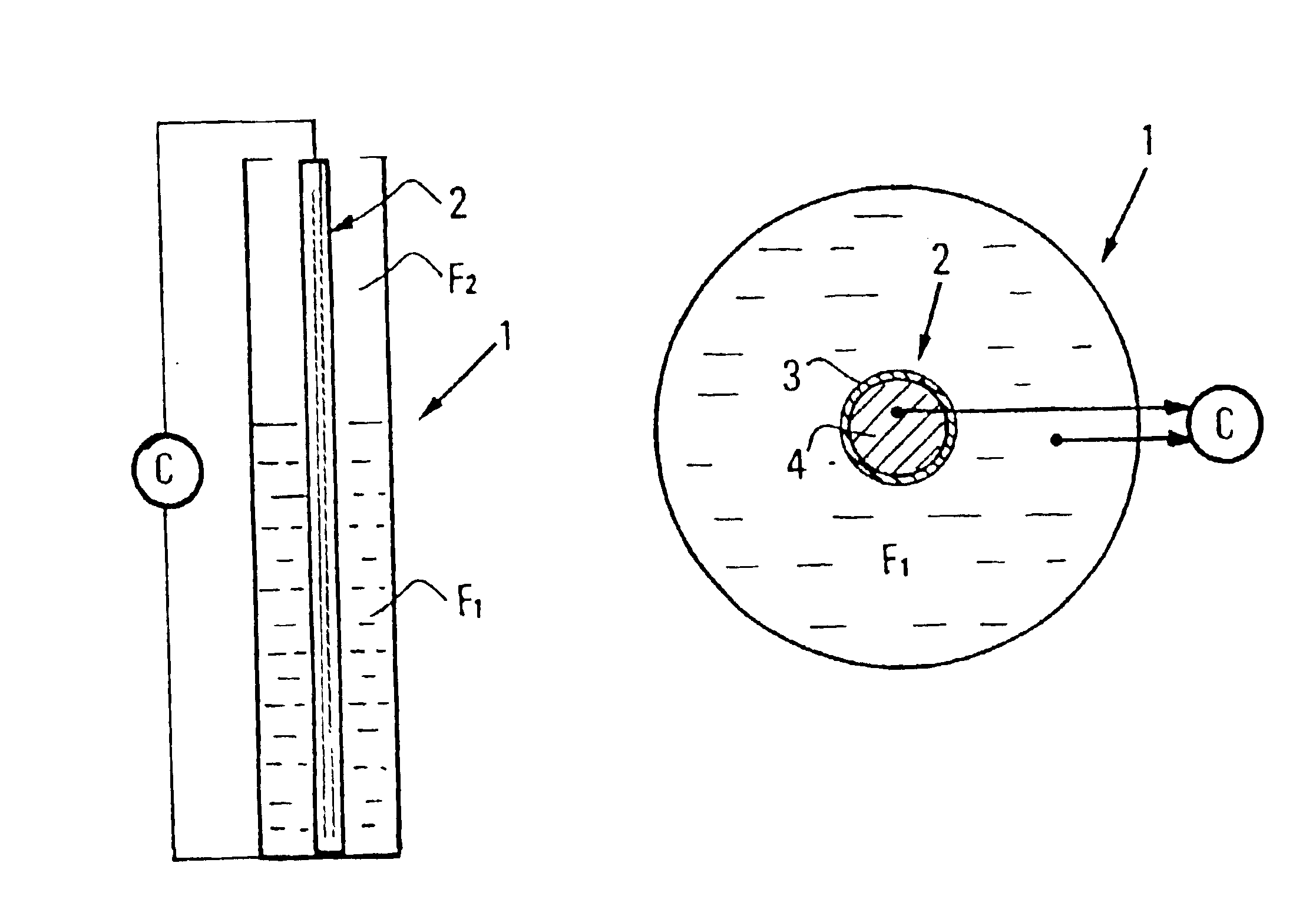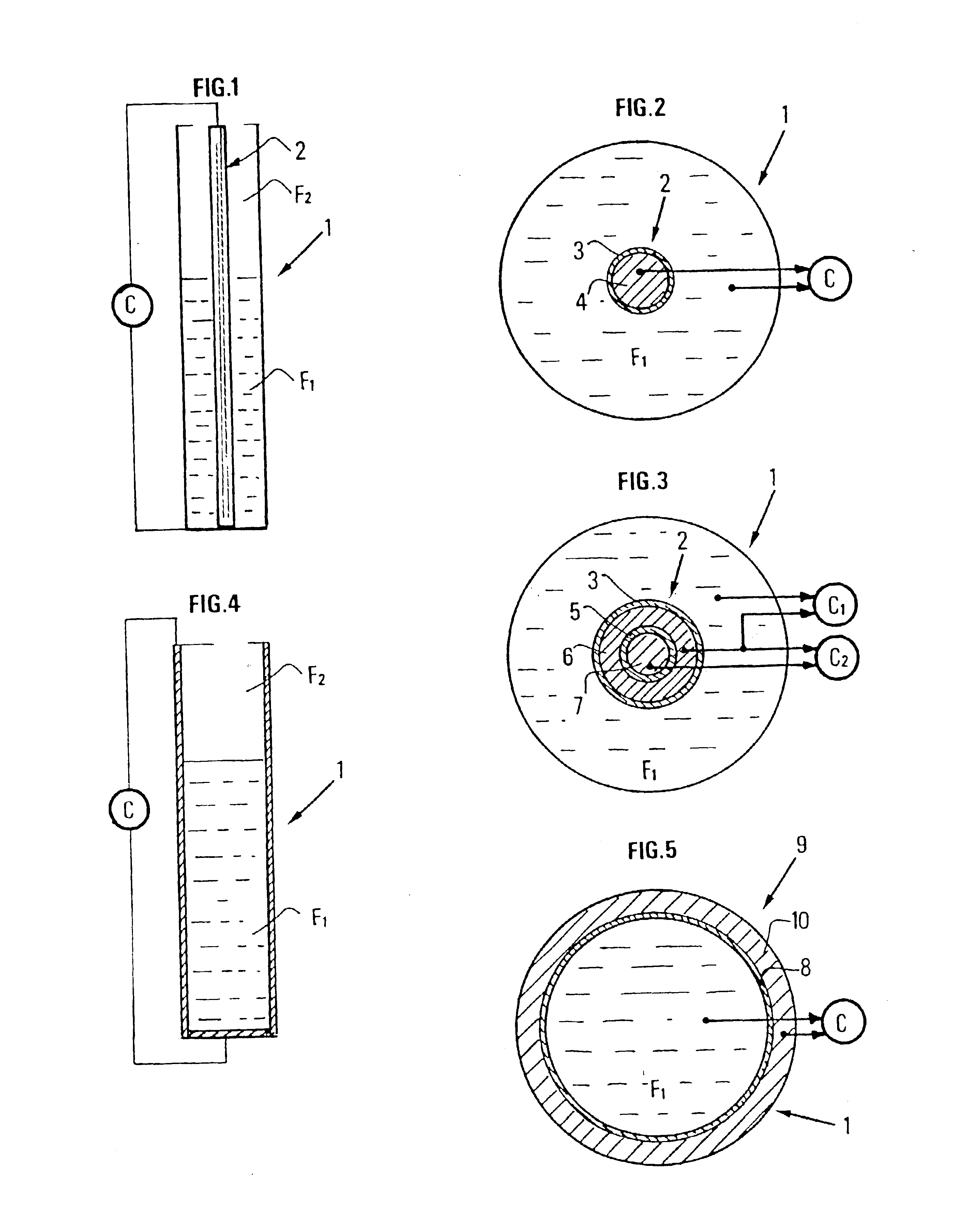Capacitive probe for measuring the level of an electricity-conducting liquid in a vessel and method of manufacturing such a probe
a technology of capacitive probes and liquids, which is applied in the direction of liquid/fluent solid measurement, machines/engines, instruments, etc., can solve the problems of loss of precision, deterioration of the level of the capacitive probe, and difficulty in forming a uniform and thin insulating layer on the metallic rod or wall, etc., to achieve good precision and stable in time
- Summary
- Abstract
- Description
- Claims
- Application Information
AI Technical Summary
Benefits of technology
Problems solved by technology
Method used
Image
Examples
Embodiment Construction
The capacitive probe according to the invention is suited to continuously measure the level of the interface between an electrically conductive fluid Fl (brine for example) and another, non-conducting fluid F2 (a gas or a liquid such as oil), contained in an elongate vessel 1 (FIG. 1), by determining the capacitance of the capacitor consisting of conducting fluid Fl (first electrode) and a central rod 2.
This rod 2 comprises (FIG. 2) a tube 3 made of a heat-resisting dielectric material. This tube, obtained by moulding or extrusion, is baked at a high temperature (1000° to 2000° C. for example). Second electrode 4 is formed within insulating tube 3. It is preferably made by filling the inside of tube 3 with a fusible metal alloy so selected that its melting temperature is naturally well above the maximum operating temperature specified for the capacitive probe, while remaining greatly below the baking temperature of the heat-resisting material. An alloy based on metals such as zinc, ...
PUM
 Login to View More
Login to View More Abstract
Description
Claims
Application Information
 Login to View More
Login to View More - R&D
- Intellectual Property
- Life Sciences
- Materials
- Tech Scout
- Unparalleled Data Quality
- Higher Quality Content
- 60% Fewer Hallucinations
Browse by: Latest US Patents, China's latest patents, Technical Efficacy Thesaurus, Application Domain, Technology Topic, Popular Technical Reports.
© 2025 PatSnap. All rights reserved.Legal|Privacy policy|Modern Slavery Act Transparency Statement|Sitemap|About US| Contact US: help@patsnap.com


